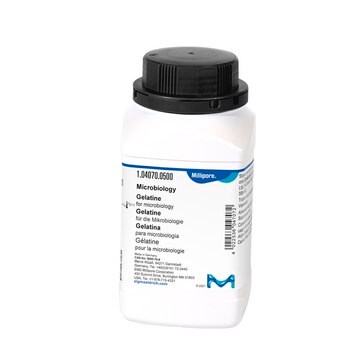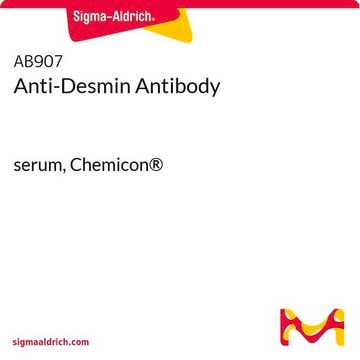G6650
Gelatin from bovine skin
Type B
About This Item
Productos recomendados
origen biológico
bovine skin
tpo
Type B
formulario
powder
técnicas
ELISA: suitable
cell culture | mammalian: suitable
immunocytochemistry: suitable
western blot: suitable
¿Está buscando productos similares? Visita Guía de comparación de productos
Aplicación
Gelatin was used for coating cell culture to improve attachment of cells, in addition to PCR to help stabilize Taq DNA. It was used as a blocking reagent in Western blotting, ELISA, and immunohistochemistry. Gelatin can also be used as a component of media for species differentiation in bacteriology. Gelatin is a biocompatible polymer and has been used as delivery vehicle for the release of bioactive compounds and in the generation of scaffolds for engineering applications.
It was used to test keratinocyte growth factor stimulation of gelatinase (matrix metalloproteinase-9) and plasminogen activator in histiotypic epithelial cell culture. It was also used to study the changes in the nucleolar organizer regions in the tuberomammillar region after dehydration.
Componentes
Precaución
Nota de preparación
Código de clase de almacenamiento
11 - Combustible Solids
Clase de riesgo para el agua (WGK)
nwg
Punto de inflamabilidad (°F)
Not applicable
Punto de inflamabilidad (°C)
Not applicable
Equipo de protección personal
Eyeshields, Gloves, type N95 (US)
Certificados de análisis (COA)
Busque Certificados de análisis (COA) introduciendo el número de lote del producto. Los números de lote se encuentran en la etiqueta del producto después de las palabras «Lot» o «Batch»
¿Ya tiene este producto?
Encuentre la documentación para los productos que ha comprado recientemente en la Biblioteca de documentos.
Los clientes también vieron
Nuestro equipo de científicos tiene experiencia en todas las áreas de investigación: Ciencias de la vida, Ciencia de los materiales, Síntesis química, Cromatografía, Analítica y muchas otras.
Póngase en contacto con el Servicio técnico













